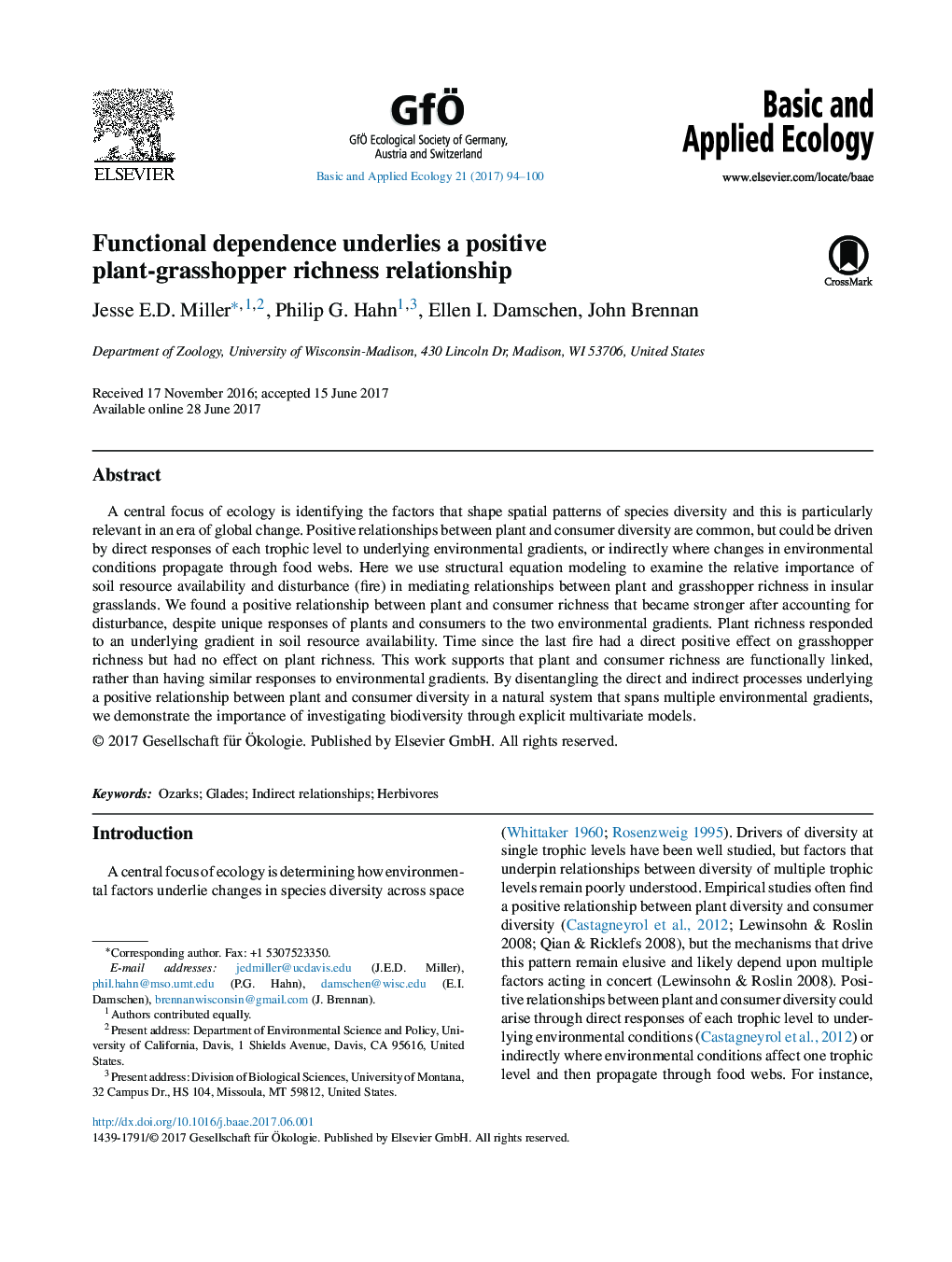| Article ID | Journal | Published Year | Pages | File Type |
|---|---|---|---|---|
| 5742828 | Basic and Applied Ecology | 2017 | 7 Pages |
A central focus of ecology is identifying the factors that shape spatial patterns of species diversity and this is particularly relevant in an era of global change. Positive relationships between plant and consumer diversity are common, but could be driven by direct responses of each trophic level to underlying environmental gradients, or indirectly where changes in environmental conditions propagate through food webs. Here we use structural equation modeling to examine the relative importance of soil resource availability and disturbance (fire) in mediating relationships between plant and grasshopper richness in insular grasslands. We found a positive relationship between plant and consumer richness that became stronger after accounting for disturbance, despite unique responses of plants and consumers to the two environmental gradients. Plant richness responded to an underlying gradient in soil resource availability. Time since the last fire had a direct positive effect on grasshopper richness but had no effect on plant richness. This work supports that plant and consumer richness are functionally linked, rather than having similar responses to environmental gradients. By disentangling the direct and indirect processes underlying a positive relationship between plant and consumer diversity in a natural system that spans multiple environmental gradients, we demonstrate the importance of investigating biodiversity through explicit multivariate models.
